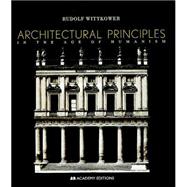
What is included with this book?
| PART I THE CENTRALLY PLANNED CHURCH AND THE RENAISSANCE | 16 | (25) | |||
|
16 | (6) | |||
|
22 | (7) | |||
|
29 | (2) | |||
|
31 | (7) | |||
|
38 | (3) | |||
| PART II ALBERTI'S APPROACH TO ANTIQUITY IN ARCHITECTURE | 41 | (19) | |||
|
41 | (2) | |||
|
43 | (4) | |||
|
47 | (4) | |||
|
51 | (8) | |||
|
59 | (1) | |||
| PART III PRINCIPLES OF PALLADIO'S ARCHITECTURE | 60 | (44) | |||
|
60 | (7) | |||
|
67 | (8) | |||
|
75 | (14) | |||
|
89 | (8) | |||
|
97 | (7) | |||
| PART IV THE PROBLEM OF HARMONIC PROPORTION IN ARCHITECTURE | 104 | (34) | |||
|
104 | (3) | |||
|
107 | (4) | |||
|
111 | (2) | |||
|
113 | (6) | |||
|
119 | (4) | |||
|
123 | (7) | |||
|
130 | (8) | |||
| APPENDIX I Francesco Giorgi's Memorandum for S. Francesco della Vigna | 138 | (2) | |||
| APPENDIX II The Problem of the Commensurability of Ratios in the Renaissance | 140 | (2) | |||
| APPENDIX III Bibliographical Notes on the Theory of Proportion | 142 | (3) | |||
| APPENDIX IV Proportion in Art and Architecture: an amalgamation of previously unpublished lectures by Professor Wittkower | 145 | (11) | |||
| Part I: The Need for Order | 145 | (2) | |||
| Part II: Origins of Western Proportional Systems | 147 | (3) | |||
| Part III: Geometry and Mediaeval Proportions | 150 | (2) | |||
| Part IV: Renaissance Proportions and Commensurability | 152 | (2) | |||
| Part V: Post-Renaissance Proportioning-Dilemmas and Possibilities | 154 | (2) | |||
| INDEX | 156 |
The New copy of this book will include any supplemental materials advertised. Please check the title of the book to determine if it should include any access cards, study guides, lab manuals, CDs, etc.
The Used, Rental and eBook copies of this book are not guaranteed to include any supplemental materials. Typically, only the book itself is included. This is true even if the title states it includes any access cards, study guides, lab manuals, CDs, etc.